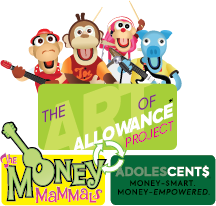How Much Does Free Cost?
We get so much free stuff. Pens. T-shirts. Bulging-eye monkey key chains. But is anything really free? “The more things we desire and the more we have to do to …
Resources for Kids Moving Towards Adulthood
We get so much free stuff. Pens. T-shirts. Bulging-eye monkey key chains. But is anything really free? “The more things we desire and the more we have to do to …
I recently reconnected with a high school friend whose older daughter, Sam, is now in college. When she was accepted Early Decision to her top choice, he immediately realized: “Oh, …
Financial psychologist Brad Klontz discusses his concept of money scripts and explains how coming to terms with our own scripts allows us to become better financial role models for our kids.
We can help our kids move their consumption sliders over time towards minimalism and away from outrageous consumption.
Author and journalist Ron Lieber discusses three things to consider during the college search process.
Doctor Robert Reiher offers insight into the concept of “noise” and explains its relationship to cognitive development, marketing and self-control.
Identifying the difference between needs and wants is one of the three core money-smart skills. With primary needs met, distinguishing between needs and wants feels more like distinguishing between wanting and wanting more. Needlets can help.
Does the tried-and-true three-jar system have room for two more inclusions? Robin Taub discusses the importance of earning and investing in addition to sharing, saving and spending smart.
Desire is intoxicating. The dopamine hit we get is in anticipation of the reward. The reward itself is anticlimactic. How can we help our kids overcome desire?
Is it possible to protect our kids from rampant consumerism in a social media age? Josh Golin of the Campaign for a Commercial-Free Childhood helps answer this question.
